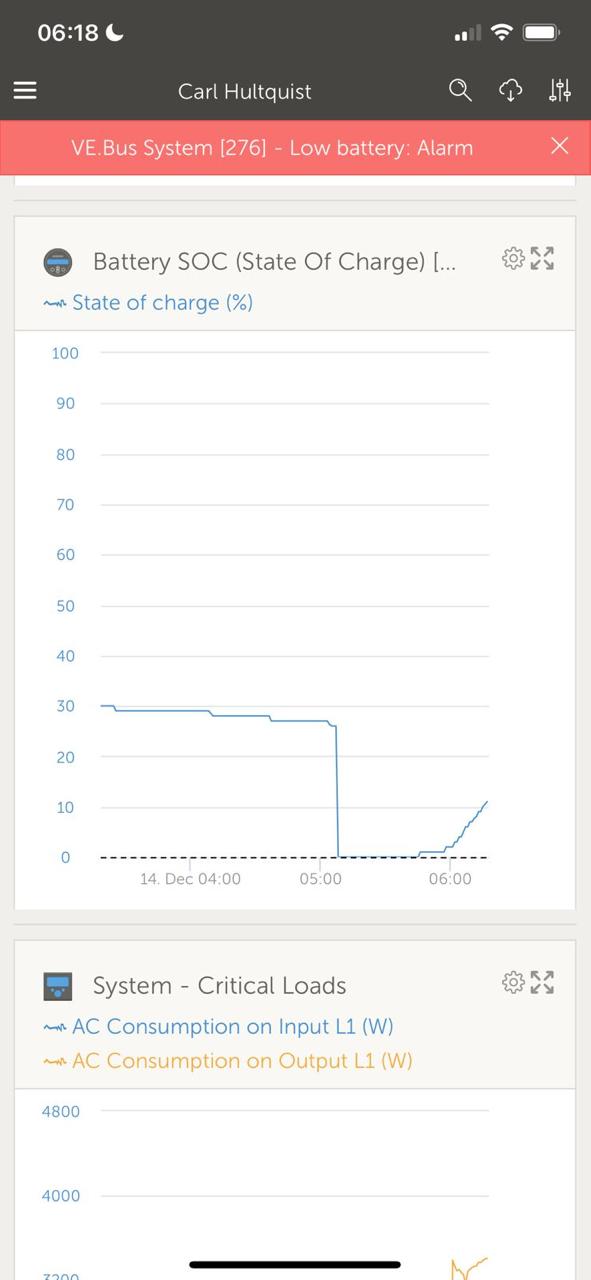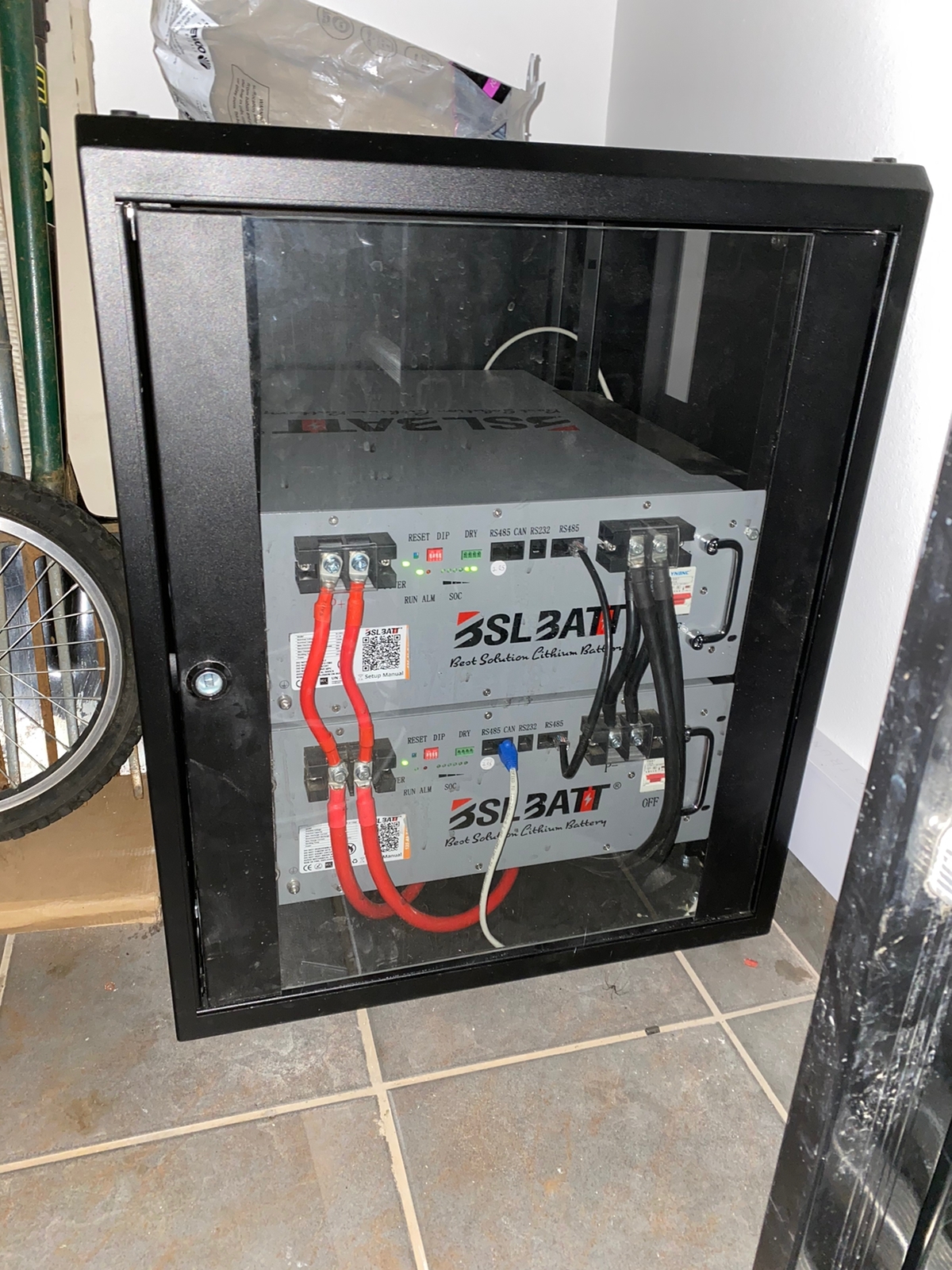Hi,
I have a system with two BSL 7kw LFP48 125Ah batteries wired in parallel on a bus bar, with two Multiplus II's working together. There are two MPPTs connected to the bus bar, and a Cerbo GX to handle ESS. The system is grid-tied, and configured to use the batteries' built-in BMS.
Being LiFePo4 batteries, my understanding is that they should have a higher DoD and so I have my minimum SoC set to 20%. What is odd is that occasionally the SoC will be somewhere between 30% and 40% whilst I am discharging from the battery, and it then suddenly drops to 0% triggering an alarm and causing the Multi's to start pulling from the grid. When I physically inspect the batteries, I can see from the charge LED indicators that one of them appears to have drained completely whilst the other still has charge (~2-3 out of 6 charge LEDs lit). Whenever this happens, it was the same physical battery that appeared to have drained.
My installer has tried a few things to rectify the problem, none of which have worked:
- battery firmware upgrade on both batteries
- tweaking the position of each battery's connections onto the bus bar
- rewiring the batteries so that there is a single bus bar connection with the battery terminals themselves connected in parallel
- replacing the suspect battery
I'm going to chase my installer again, but wanted to see if anyone here might have some advice. Obviously it would be good to fix the issue completely so that the battery doesn't get damaged, but I also found it a little odd that this triggered the entire system switching to the grid. Is it not possible for the system (I guess the BMS) to know that the one battery is depleted and to serve up power from just the other battery?
I've attached two screen grabs from VRM showing an example of the sudden drop in SoC, and also one showing the BMS min/max cell voltages. The latter in particular clearly shows something wrong as the min cell voltage falls off a cliff yet the max cell voltage is reasonably stable. I've also attached a recent image showing the two batteries when this happens - the top one has two charge LEDs lit, whilst the bottom one has none.
One thing that is maybe relevant is that I tend to see this behaviour 1-2 days after having had a patch of bad weather (and therefore poor solar PV). On these days my ESS configuration will tend to keep the battery stable & draw from the grid, occasionally directing grid energy into the batteries to ensure there is enough to deal with the rolling blackouts we experience in South Africa. Some of the advice from BSL via my installer has been to make sure that the batteries "float" at least once a week - we get good sunshine more often than that & so typically the SoC hits 100% by about 11am, with the MPPTs then scaling back power production to match household loads for the remainder of the day.
This isn't a major problem for us, but it does make me a little nervous that I can't trust that my batteries will definitely have power when the system shows ~35% SoC. Any advice would be greatly appreciated!
Thanks,
Carl



